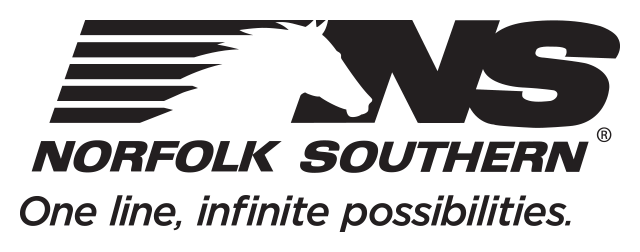Challenges, Opportunities, the Road Ahead: Q&A with Norfolk Southern’s Corporate Sustainability Officer

In this Q&A, Bruno Maestri, named CSO at Norfolk Southern in June 2015, talks about the sustainability opportunities and challenges facing the railroad, the role railroads play in reducing transportation-related greenhouse gas emissions, and the steps ahead on its social responsibility journey.
What is your role as corporate sustainability officer?
My primary role is to lead initiatives demonstrating how sustainability is embedded in the company’s culture. The aim is to connect our sustainability goals with our strategic corporate goals and to the day-to-day work of our employees. Also, it’s telling the story of how Norfolk Southern interacts in sustainable ways with our shareholders, customers, and the communities we serve. To me, corporate sustainability means acting responsibly in the conduct of our business. This can only enhance our ability to grow business.
What is your top sustainability priority over the next year or so?
Priority one is to get a deeper, more formal understanding of what is most material to Norfolk Southern and our key internal and external stakeholders in terms of sustainability. From that assessment, we can refine our areas of focus and help employees better understand the important role they each play in making the railroad and the communities where we live and work stronger and more sustainable. We are part of the fabric of the communities where we operate, and we want to add value by what Norfolk Southern brings to our communities.
As you think about sustainability trends within the broader society, what do you view as the greatest opportunities and challenges facing NS?
There is much discussion in Washington about climate change and the need to reduce carbon emissions. Studies show that freight rail is four times more fuel-efficient on average than trucks on the highway and generates 75 percent fewer carbon emissions per ton of freight. By encouraging the movement of more goods by rail instead of long-haul trucks, society actually can reduce the overall carbon footprint from transportation sources. That’s one of our big opportunities. The challenge is to establish a mechanism where rail gets credit in some manner for lowering overall emissions – even if total rail emissions go up some percentage as a result of moving higher business volumes. It’s important that those who regulate or score carbon emissions recognize the role that rail plays in reducing total transportation-related emissions.
Do you think Norfolk Southern could ever reach a point where it runs a carbon neutral operation?
As we continue to grow business, offsetting our total footprint would be very challenging, but conceptually, it’s possible. We’ve adopted technologies and operational practices that over the past five years have helped us reduce carbon emissions by more than 8 percent per revenue ton-mile of freight. Our Trees and Trains carbon mitigation program creates carbon credits sufficient to offset CO₂ emissions in a meaningful way over time. In the Mississippi Delta, a region important to our business, our Trees and Trains partnership with GreenTrees has reforested 10,000 acres with more than 6 million trees and is expected to earn carbon credits equivalent to offsetting nearly a quarter of Norfolk Southern’s annual CO₂ emissions. That’s significant. We could pursue other carbon-mitigation initiatives if they make sense from a business perspective. In addition, developing a mechanism whereby carbon credits could be earned for converting freight from highway to rail could make a substantial impact on offsetting our emissions.
What are the next steps NS needs to take to advance the company’s sustainability journey?
It’s to focus on the things that matter most to us, and we’re well on the way with those steps. Locomotive fuel efficiency is one critical area. In 2015, senior management adopted a strategic plan that for the first time creates a publicly stated goal to reduce fuel consumption over the next five years. This is key to our ongoing efforts to reduce carbon emissions. In a second critical area, we are taking steps to more effectively manage the large fleet of vehicles our people need to operate and maintain the railroad. That initiative includes the use of telematics technology to enhance driver safety, fuel economy, and operational costs. A third critical area is improving energy use in our facilities. Across our network, we’re upgrading facilities with more energy-efficient lighting and other technologies to make them smarter, greener, and less expensive to operate. Our $53-million energy-conversion project at Juniata Locomotive Shop is a good example. With facilities across 22 states, this is a major undertaking that requires identification, prioritization, and investment. It won’t happen all at once, but we are committed to the task and focused on making progress, one step at a time.
Learn more about sustainability at Norfolk Southern here.

